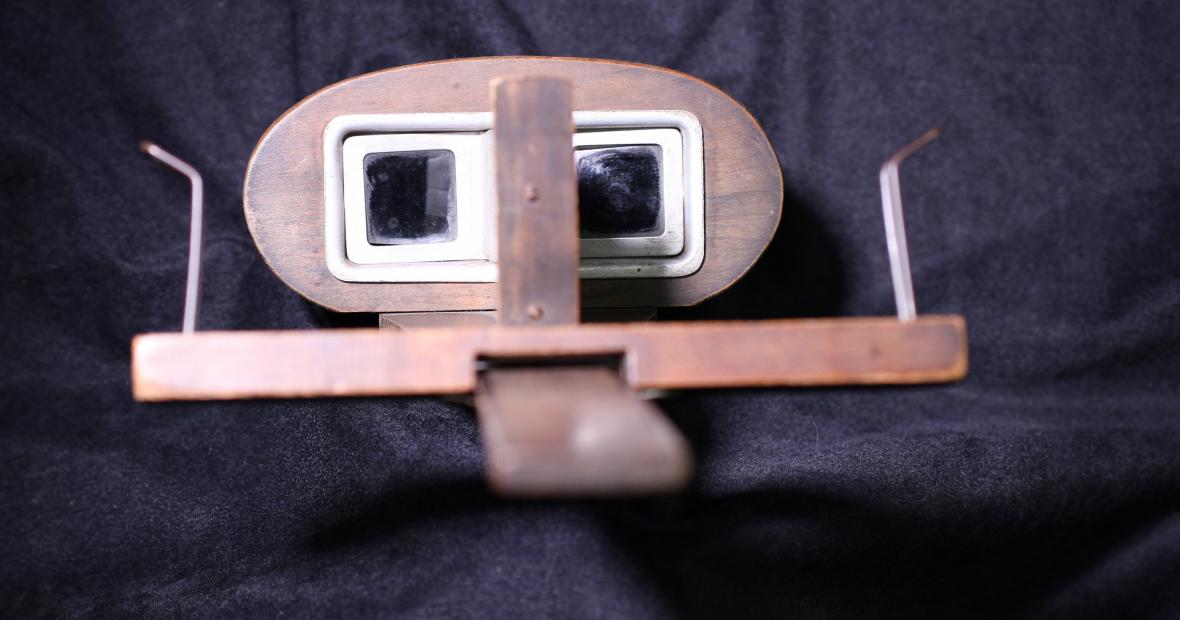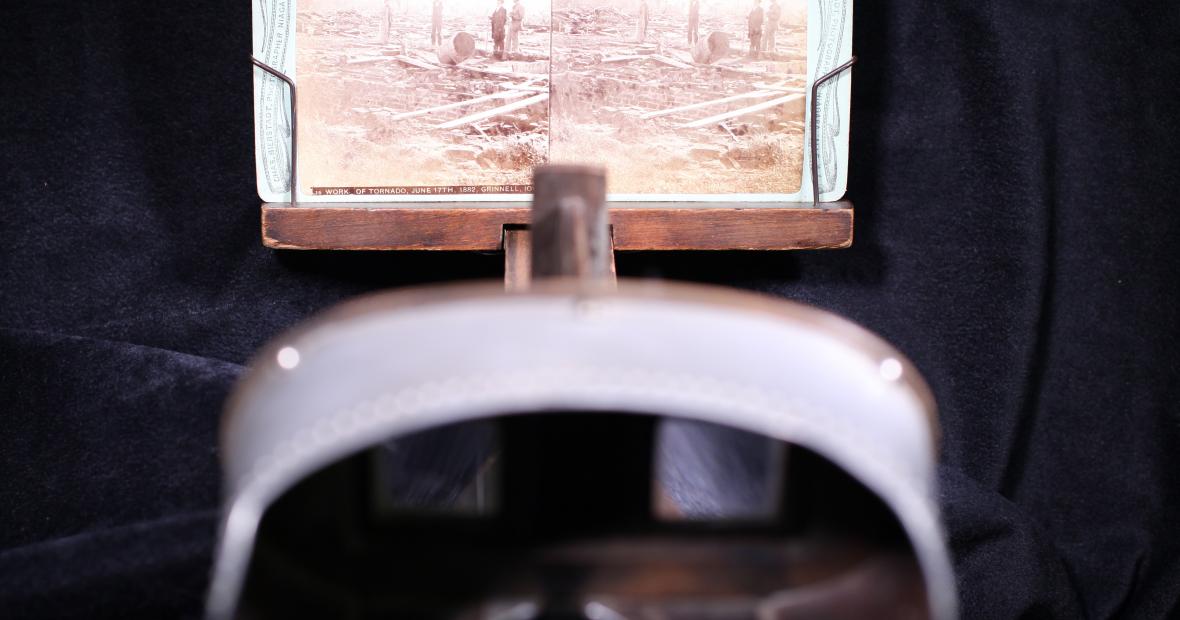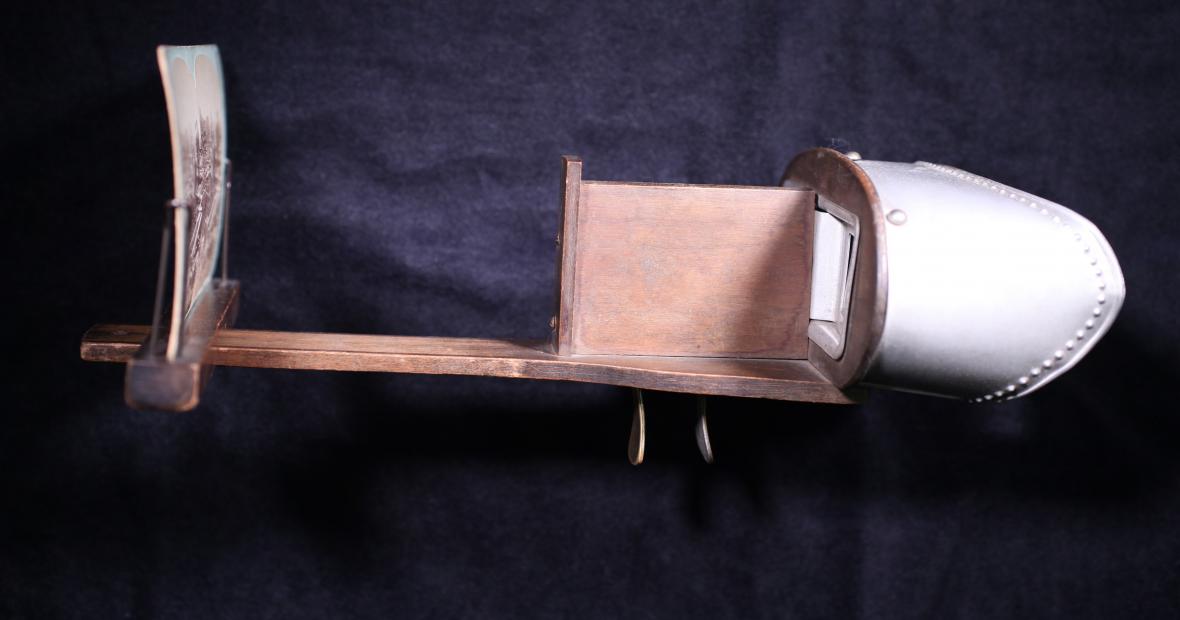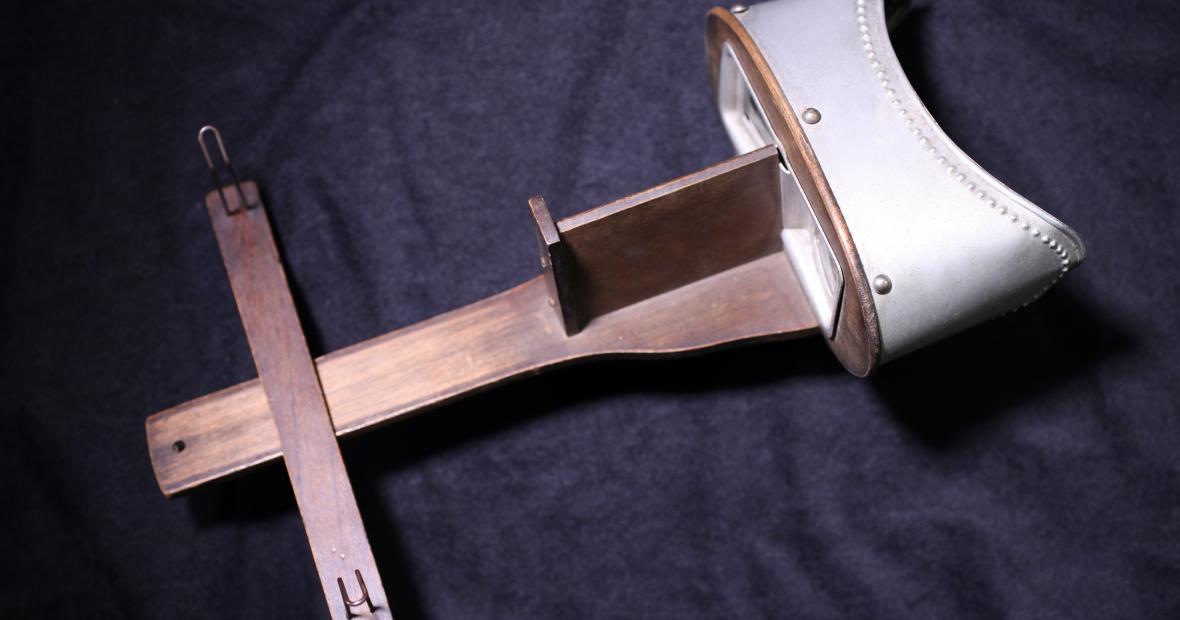Special Collections and Archives Item of the Week
Allison Haack
Think back to the first time you experienced the Internet and realized that vast quantities of information were now at your fingertips. This same sensation was felt by our ancestors who first experienced photography. The invention of stereoscopes allowed for an entirely new experience: photographs with dimension. A stereoscope is device that allows a user to see a 3-D image through a lens viewer. They no longer had to rely on illustrations and paintings, but could view still images that precisely captured a scene.
Stereoscopes were a largely Victorian middle class form of entertainment. Unlike wealthy members of the upper classes who could afford to travel abroad, the middle relied on photographs and descriptions in books to learn about the wider world. The images on stereo cards captivated people, giving them a glimpse of far away and exotic places they had only heard or read about. The use of stereoscopes declined with the increasing popularization of motion pictures. Using these stereoscopes allows students and patrons to better comprehend its importance as a means of entertainment.
Stereoscopes were highly popular from the mid-1800s up through the 1930s. Although it was not the first created, the Brewster stereoscope was the first handheld stereoscope. The inclusion of the devices at The Great Exhibition in 1851 raised their popularity and created a demand for more 3-D images. The most well-known variation was created by noted poet, author, and lecturer Oliver Wendell Holmes in 1861.
The images viewed in stereoscopes were hugely entertaining because people had never seen photography with so much depth as to give the illusion of dimension. In an 1859 article, Holmes wrote of the stereoscope: “The first effect of looking at a good photograph through the stereoscope is a surprise such as no painting ever produced. The mind feels its way into the very depths of the picture…Then there is such a frightful amount of detail, that we have the same sense of infinite complexity which Nature gives us.”
Stereoscopes work by placing two photographs side by side on a card, which is then placed on the end of a sliding mount. The sliding aspect means that the image can be brought closer or farther away from the face. The 3-D effect of the images comes from the fact that two photographs are not identical, but rather taken from very slightly different angles. When the photographs are seen through the viewer, the left and right eye images come together to give the effect of one three dimensional image. The name comes from the stereo cards used.
We encourage anyone with an interest to drop by Special Collections and put themselves in the shoes of the people who first experienced three dimensional images by using these entertainment devices from the past. The models available in the Special Collections and Archives are Holmes Stereoscopes.
Special Collections and Archives is open to the public 1:30-5:00pm Monday through Friday and mornings by appointment.




